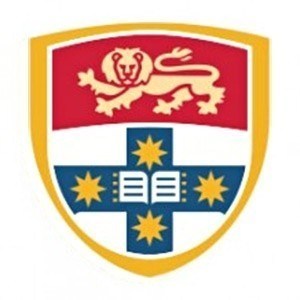The Bachelor of Design at Swinburne University of Technology is a comprehensive and innovative program designed to equip students with the creative, technical, and professional skills necessary to excel in the dynamic field of design. This degree program offers a broad spectrum of design disciplines, including graphic design, digital media, interaction design, and environmental design, providing students with a versatile foundation to pursue diverse careers in the creative industry.
Throughout the course, students will engage in a combination of theoretical studies and practical projects that foster critical thinking, visual communication skills, and a strong understanding of design principles. The curriculum is crafted to ensure graduates are well-versed in current industry trends, software tools, and emerging technologies, enabling them to develop innovative design solutions that meet real-world challenges. Emphasis is placed on sustainability, user-centered design, and ethical practices, preparing students to contribute responsibly to society and the environment.
The program encourages a collaborative learning environment, where students work on team projects, participate in workshops, and interact with industry professionals. These activities are aimed at enhancing creativity, problem-solving abilities, and project management skills. Additionally, students have access to state-of-the-art facilities and dedicated design studios that foster experimentation and hands-on learning.
Graduates of the Bachelor of Design are prepared for employment in various sectors such as advertising, branding, digital media production, urban planning, and interior design. They also possess the entrepreneurial skills necessary to start their own design ventures or work as freelance designers. The degree emphasizes lifelong learning and adaptability, ensuring that graduates can keep pace with rapid technological changes and evolving industry demands.
Swinburne’s strong industry connections, including partnerships with design firms and advertising agencies, offer students internship opportunities that provide valuable industry experience and networking opportunities. The college’s commitment to innovative education and professional readiness makes the Bachelor of Design a compelling choice for aspiring designers seeking to make a meaningful impact through their creativity and technical expertise.
The Bachelor of Design program at Swinburne University of Technology provides students with a comprehensive education in the core principles and practices of design across multiple disciplines. Emphasizing both theoretical knowledge and practical skills, the program prepares graduates to excel in the dynamic and evolving field of design, including areas such as visual communication, industrial design, interaction design, and sustainability. Throughout the course, students engage in a diverse range of projects that foster creativity, critical thinking, and problem-solving abilities, enabling them to develop innovative solutions for real-world challenges. The curriculum integrates foundational design principles with advanced technical skills, including digital design software, prototyping, user experience (UX) design, and strategic thinking. Students also have the opportunity to collaborate with industry partners, participate in internships, and undertake design projects that simulate professional practice. The program encourages an interdisciplinary approach, allowing students to explore various facets of design and to understand its impact on society, environment, and technology. Faculty members are experienced professionals and researchers who provide mentorship and support, guiding students through their academic journey and towards successful careers. Graduates of the Bachelor of Design will be equipped with a strong portfolio of work, a professional understanding of industry standards, and the flexibility to adapt to new trends and technologies in the design sector. Whether aiming to work in creative agencies, establish their own design practice, or pursue further postgraduate studies, students will find valuable opportunities within Swinburne’s innovative and supportive learning environment.
- Year 12 or equivalent
- VCE Prerequisites: Units 3 and 4: a minimum study score of 25 in English (or equivalent) or 30 in English (EAL)
- And Components 4 and 3: a minimum study score of 20 in Another of Art, Interactive Digital Media C or VCE VET Creative and Digital Media, Media, Product Design and Technology, Studio Arts or Visual Communication Design. Extra performance criteria and prerequisite requirements may also apply. English language requirements - satisfactory completion of a few of these following: Swinburne's English for Academic Purposes (EAP 5 high degree ) with overall 65%, all skills 65%
- Minimum IELTS overall group of 6.0 (Academic Module) with no individual band below 6.0
- TOEFL iBT (web-based ) minimum score of 75 having a hearing ring a minimum of 18 and writing ring a minimum of 20
- Pearson (PTE) minimum score of 50 (no real skills significantly less than 50)
- Any other equivalent assessment of English language proficiency. Note: A prerequisite for all classes, the Pearson Test of English Academic (PTE Academic) can currently be done online campus in Hawthorn.
The Bachelor of Design program at Swinburne University of Technology offers a range of financing options to assist students in funding their studies. Domestic students can access government subsidized loans such as HECS-HELP, which allows eligible students to defer their tuition fee payments until they are earning above a specified income threshold. Additionally, students may be eligible for various scholarships and grants provided by Swinburne University, including academic excellence scholarships, equity scholarships, and industry-sponsored awards, which can significantly offset the cost of tuition and associated expenses. International students are required to pay full tuition fees upfront or may opt for payment plans offered by the university in collaboration with approved financial institutions, enabling them to spread the cost over manageable installments.
Swinburne University also provides guidance on external scholarships and financial assistance programs that students can apply for independently to supplement their funding. Students are encouraged to explore part-time employment opportunities on or near campus, which can help cover living expenses and reduce financial stress during their studies. The university's logistics and support services provide detailed information to help students budget and plan financially throughout their academic journey.
Students should consider additional costs such as materials, software, and travel when planning their finances, as these are not covered by tuition fees or standard financial aid packages. Some students may also qualify for financial hardship programs or emergency relief services offered by Swinburne University if unforeseen circumstances impact their ability to fund their studies. International students should be aware of currency exchange rates and additional costs associated with studying abroad, including health insurance and visa requirements, which can add to the overall financial planning process.
In summary, Swinburne University provides comprehensive financial support options for domestic students and a range of payment plans for international students to ensure that students can pursue their design degrees with manageable financial arrangements. It is advisable for prospective students to contact Swinburne's student financial services directly to receive personalized advice and detailed information about available funding options tailored to individual circumstances.
The Bachelor of Design at Swinburne University of Technology is a comprehensive program that prepares students for a dynamic career in the creative industries. The curriculum emphasizes both theoretical knowledge and practical skills, ensuring graduates are well-equipped to meet the demands of various design fields. Throughout the course, students have the opportunity to develop their competencies in areas such as visual communication, product design, interior design, digital media, and user experience.
The program is designed to foster innovation, creativity, and critical thinking, encouraging students to explore different design concepts and methodologies. Students engage in hands-on projects, workshops, and industry placements that provide valuable real-world experience and networking opportunities. The curriculum incorporates cutting-edge technologies and design tools, enabling students to stay current with industry standards.
Swinburne’s design program also emphasizes sustainability and social responsibility, integrating these principles into project work and research activities. This approach aims to produce graduates who are not only skilled creators but also responsible professionals who understand the broader impact of their work on society and the environment.
The faculty comprises highly qualified academic staff with extensive industry experience, providing mentorship and guidance throughout the program. Students benefit from access to state-of-the-art facilities, including design studios, computer labs, and fabrication workshops. The program recognizes the importance of interdisciplinary collaboration, encouraging students to work with peers from other fields such as engineering, business, and information technology.
Graduates of the Bachelor of Design are prepared for diverse career paths, including graphic designer, user experience designer, product designer, interior designer, and digital media specialist. Many alumni have gone on to work with leading design firms, media companies, or have started their own creative ventures. The program also offers pathways to postgraduate studies for those wishing to deepen their expertise or pursue academic careers in design.
Overall, Swinburne’s Bachelor of Design provides a balanced education that combines artistic expression with practical skills and industry relevance. It aims to develop versatile, innovative, and socially conscious designers ready to contribute to and shape the future of the creative industries.





